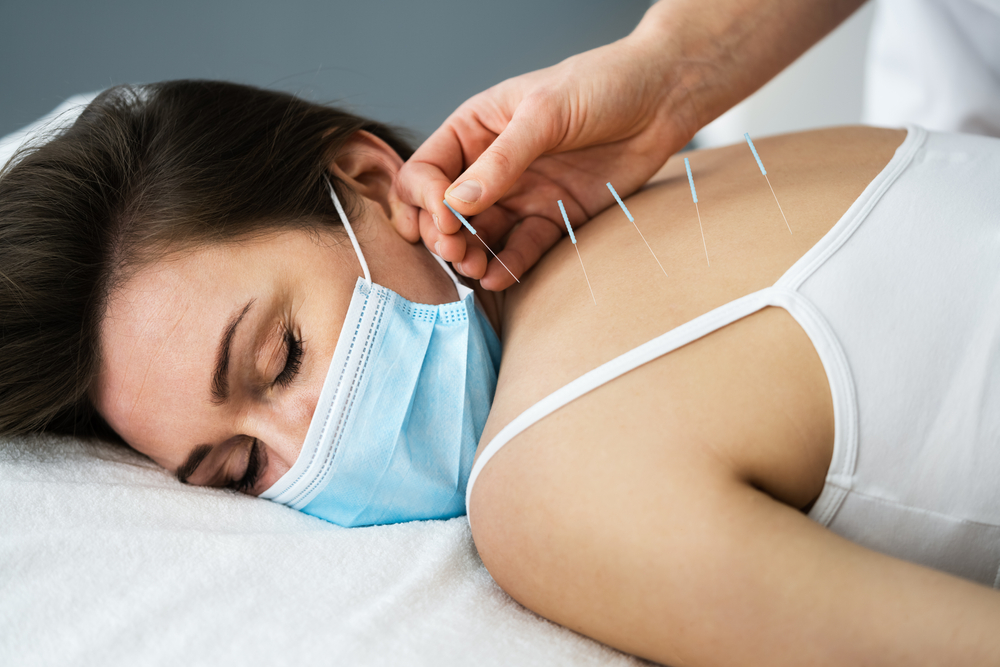The Science Behind Dry Needling Treatment: Effective Pain Relief and Muscle Recovery

Image Source: Google
Dry needling is a technique used by physical therapists to treat muscular pain and dysfunction. It involves inserting thin needles into trigger points or tight bands of muscle tissue to stimulate a healing response in the body. This treatment is gaining popularity for its effectiveness in providing pain relief and promoting muscle recovery. Let's explore the science behind the best dry needling treatment and how it works.
What is Dry Needling?
Dry needling is a therapeutic technique that involves inserting thin needles into the skin and muscles to target trigger points or tight bands of muscle tissue. Unlike traditional acupuncture, which is based on the principles of Traditional Chinese Medicine, dry needling is rooted in Western medicine and neurophysiology. The goal of dry needling is to elicit a local twitch response in the muscle, which can help reduce pain and improve function.
How Does Dry Needling Work?
The precise mechanisms of action behind dry needling are still being researched, but several theories exist to explain its effectiveness:
- Trigger Point Deactivation: Dry needling can help inactivating trigger points, which are hyperirritable spots in skeletal muscle that are associated with the production and maintenance of pain.
- Improved Blood Flow: The insertion of needles can promote local blood flow, which can help deliver oxygen and nutrients to the muscles, facilitating the healing process.
- Release of Neurotransmitters: Dry needling may stimulate the release of endorphins and other neurotransmitters that can help block pain signals and promote a sense of well-being.
- Modulation of the Nervous System: By targeting specific points in the muscle tissue, dry needling can influence the nervous system and help reset dysfunctional neuromuscular pathways.
Conditions Treated with Dry Needling
Dry needling can be used to treat a variety of musculoskeletal conditions and injuries, including:
- Chronic pain
- Neck pain
- Shoulder pain
- Lower back pain
- Tendonitis
- Sciatica
- Headaches
- Sports injuries
- Fibromyalgia
Benefits of Dry Needling
Dry needling offers several benefits for individuals seeking pain relief and muscle recovery:
- Pain Relief: By targeting trigger points and releasing muscle tension, dry needling can help alleviate pain and improve mobility.
- Improved Flexibility: Dry needling can help relax tight muscles and improve range of motion in the joints.
- Accelerated Healing: The microtrauma caused by the needles can stimulate the body's natural healing response, speeding up the recovery process.
- Enhanced Performance: Athletes and active individuals can benefit from dry needling to address muscle imbalances and prevent injuries.
- Non-Invasive Treatment: Dry needling is a minimally invasive procedure that does not involve the use of medication, making it a safe option for many patients.
What to Expect During a Dry Needling Session
If you are considering dry needling as a treatment option, here is what you can expect during a typical session:
- Evaluation: Your physical therapist will assess your condition and identify the areas that need to be treated with dry needling.
- Insertion of Needles: Thin, sterile needles will be inserted into the skin and muscles at specific points to target trigger points or tight muscle bands.
- Twitch Response: You may experience a twitch response in the muscle, which is a normal and desired reaction during dry needling.
- Post-Treatment Care: Your physical therapist may recommend icing the treated areas and performing gentle stretches to enhance the effects of dry needling.
- Follow-Up: Depending on your condition, you may need multiple dry needling sessions to achieve optimal results.
Is Dry Needling Right for You?
Dry needling can be an effective treatment option for individuals experiencing muscular pain, stiffness, or dysfunction. However, it may not be suitable for everyone. Consider the following factors before opting for dry needling:
- Medical History: Inform your physical therapist about any medical conditions, allergies, or medications you are taking before undergoing dry needling.
- Pain Tolerance: While dry needling is generally well-tolerated, some individuals may experience discomfort during the procedure.
- Expectations: Understand the goals of dry needling and discuss your expectations with your physical therapist to ensure it aligns with your treatment objectives.
- Alternative Treatments: Explore other treatment options, such as physical therapy, chiropractic care, or medications, before deciding on dry needling.
Overall, the science behind dry needling supports its effectiveness in providing pain relief and promoting muscle recovery. If you are considering dry needling as a treatment option, consult with a qualified physical therapist to determine if it is the right choice for your specific needs.
